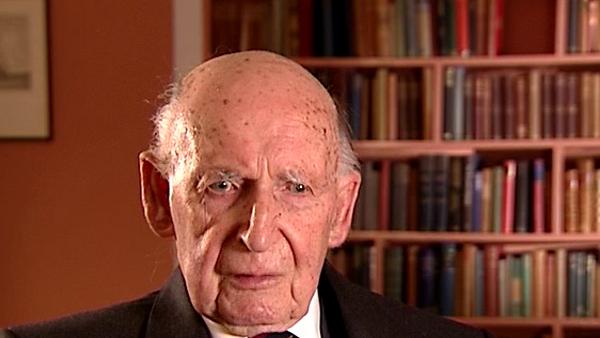NEXT STORY

Building a new aerial
RELATED STORIES

NEXT STORY

Building a new aerial
RELATED STORIES



I'd like to say that in July of that year, when we were observing the meteor phenomenon one day, in the Park Royal, the cathode ray tube was suddenly ablaze with noise, and there was no... nothing to do with the transient echoes, but the noise level on the tube increased to... oh, greatly, and there was no obvious reason for that, and we soon realised that this was a solar flare. And so, now, Hey... the history of that, again was quite recent. In 1942, the German battleships Scharnhorst and Gneisenau in February had made a most remarkable escape to their home ports, from Brest, through the English Channel. And they were scarcely attacked, and this caused consternation and great depression in the country. And one of the main reasons was that the radars had been jammed.
Now, many, many years later the person who... the German who designed the jamming sent me all the details of that, and I believe those details are also in the archives. But that is by the way. The real point was that a few weeks later, a similar jamming, apparently a similar jamming, occurred on the four metre ack... ack defence radars. The four-metre-ones are the type which I now had from Hey, and he was given the job of investigating this. Well, Hey discovered that there was no obvious enemy activity, which could have led to this jamming, but he made the critical observation that not all the GL radars reported the jamming, and that those that did so were pointed in the direction of the sun. He then investigated with the Royal Greenwich Observatory, and found out that at that time, a giant solar flare was on the solar disc.
Now, many people refused to believe, after the war, that this was intense radio emission from the sun. Even Sir Edward Appleton disputed it. But, in fact, Hey had discovered the radio bursts, which later became investigated in great detail from the groups of sunspots and solar flares on the solar meridian. And we had observed one of these. I think it was in July 1946, and that, in fact, I think, was the first paper that ever was sent out from Jodrell. I think it was written by Bandwell and myself, and published in Nature. That is an interesting comment on the ways to the first scientific paper emerging from Jodrell. It had little relevance to our main aim, but nevertheless was rather encouraging for us.
Bernard Lovell (1913-2012), British radio astronomer and founder of the Jodrell Bank Observatory, received an OBE in 1946 for his work on radar, and was knighted in 1961 for his contribution to the development of radio astronomy. He obtained a PhD in 1936 at the University of Bristol. His steerable radio telescope, which tracked Sputnik across the sky, is now named the Lovell telescope.
Title: Observing a solar flare and how Hey discovered radio bursts
Listeners: Megan Argo Alastair Gunn
Megan Argo is an astronomer at the University of Manchester's Jodrell Bank Observatory researching supernovae and star formation in nearby starburst galaxies. As well as research, she is involved with events in the Observatory's Visitor Centre explaining both astronomy and the history of the Observatory to the public.
Alastair Gunn is an astrophysicist at Jodrell Bank Observatory, University of Manchester. He is responsible for the coordination and execution of international radio astronomical observations at the institute and his professional research concerns the extended atmospheres of highly active binary stars. Alastair has a deep interest and knowledge of the history of radio astronomy in general and of Jodrell Bank in particular. He has written extensively about Jodrell Bank's history.
Tags: Park Royal, German battleship Scharnhorst, German battleship Gneisenau, Brest, English Channel, Royal Greenwich Observatory, Jodrell Bank, Nature, Edward Appleton, James Stanley Hey
Duration: 3 minutes, 30 seconds
Date story recorded: January 2007
Date story went live: 05 September 2008